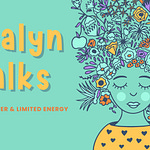If today’s post made you feel seen, or soothed, or simply less alone…
please share it with someone who might need it too.
And if you want to sprinkle a little extra support into my creative brain aka “brain snacks”, you can:
Buy me a coffee or Send brain cookies
Content note:
This story gently touches on sensory overwhelm, panic, and medical anxiety.
Please take your time with it. Breathe when you need to.
Your body deserves gentleness, too. 🤍
So, since many of you are nosy — and I say that with love — I want to overshare a story with you today.
I think a lot of you know why I keep reclaiming the word “Oriental.”
It’s because, for the longest time, people have labeled us, defined us, and put us into categories we never signed up for.
I come from a tribe in the Philippines — a tribe that honors Mother Nature.
We respect the land, the wind, and the fire.
We see all living creatures as equals — not something we dominate, but beings we live with.
But for generations, my tribe — my family — has been called aswang.
Witches.
People who practiced witchcraft.
That’s one of the reasons our tribe resisted Christianity for a long time.
Because deep down, we knew who we really were.
We lived among trees. Built homes on their branches.
Slept in their arms when we needed refuge.
We dug holes in the earth for food, fished in the rivers, cooked through rituals that honored the lives we took.
But when we went down to the cities — to buy medicine, oil, eggs — people stared.
We had curly hair.
We dressed differently.
We spoke softly, like whispering enchantments.
And even though we were Filipino, we were treated like we didn’t belong.
So, we returned to the forests and mountains, where we were happiest.
Together. Connected. Whole.
Now, here I am — living in Germany, exposed to a wider world.
And I can tell you, the misunderstanding my ancestors faced still lingers.
I don’t remember all the details,
but my body remembers.
My brain remembers.
And that’s why I share these stories —
because maybe, through them, we can all remember who we are, too.
The Panic and the Calm
Recently, I had an MRI.
I lasted exactly one minute and fifty-seven seconds.
The first sound was bearable — rhythmic, even.
But the second — that sharp, metallic scream against silence — it cracked my nervous system open.
My jaw locked. My chest tightened. Breathing turned into labor.
I pressed the panic button and stumbled out — dizzy, nauseous, barely present.
It took three Mentos, a cup of water, and the sight of my pink g-string on the chair (which somehow made me laugh) to come back to myself.
Maybe next time, I’ll ask for medication or sedation.
My body needs that grace.
But something shifted after.
We visited friends, and I held my godsons — one toddler, one infant.
Skin-to-skin, heartbeat to heartbeat, breath to breath —
I felt what the MRI couldn’t give me: a rhythm my body could trust again.
That’s what skin-to-skin does.
For babies. For adults.
For anyone whose body remembers chaos too clearly.
My breath softened. My jaw unclenched.
My nervous system whispered: safe now.
It’s the same body that panicked —
it just needed a different rhythm to listen to.
Calm isn’t the absence of chaos —
it’s your body remembering how to return home. 🌾
Childhood in the Rice Fields
When I think of rhythms, I think of home.
I grew up in the rice fields of the Philippines —
a world that Fernando Amorsolo painted in golden light.
He captured what I saw daily:
the gentle sway of rice stalks,
farmers bent under the sun,
women carrying baskets with grace and strength.
But beyond that beauty lies the truth —
the life of a rice farmer is not easy.
The Hard Truth Behind the Beauty
Rice farming is a dance with disaster.
Floods, typhoons, droughts — they can wipe out a year’s work in a single night.
Imagine planting your hopes into a field, only to see them drowned.
Yet we rebuild.
We plant again.
We keep trusting the soil.
That’s resilience — not loud or heroic — just steady, patient, unyielding.
Because every grain of rice matters.
It’s survival.
It’s respect for those who came before.
That’s why, even now, I don’t get easily bothered by what people call “first world problems.”
When you grow up watching your parents harvest in the rain,
you learn what really deserves your worry.
The Way We Cook Is the Way We Live
In the Philippines, the way we cook says a lot about the way we live.
We don’t cook from a recipe — we cook from what’s abundant.
If there’s pumpkin, mung beans, or coconut — that’s what we use.
We create from what nature gives.
One of my favorites is ginataang munggo — a stew of mung beans, pumpkin, and salted fish cooked in coconut milk.
It’s humble. Nourishing. Made to share.
We don’t ask, what’s missing?
We ask, what do we have?
If we lack salt, we knock on a neighbor’s door.
If someone’s out of rice, another household shares their leftover bowl.
Because in our village, each kitchen is an extension of another.
We live through bayanihan — helping without asking for anything in return.
We cook not to impress, but to nourish —
to warm the stomach, the soul, and the spirit.
And maybe that’s why I still cook the same way today.
Slowly. Intuitively.
Never quite the same recipe,
but always the same heart.
It’s also how I write.
Using what’s abundant.
Letting the words simmer until they feel like home.
Healing Through Rhythm
The rice fields taught me patience.
My tribe taught me reverence.
My body taught me gentleness.
And the babies I hold?
They remind me that calm is something we return to — not something we chase.
Amorsolo painted it, too —
the golden harvests, the laughter, the sunlight after rain.
A quiet knowing that beauty and struggle can coexist.
Slowing Down and Creating Intentionally
These days, I’m writing slower.
Collaborating more.
Weaving stories with other voices — like Angel’s.
I’m learning that creativity, like farming, is never a solo act.
It’s communal. Rhythmic. Patient.
Closing
So, if you’ve ever had a day that broke you open,
or a body that refused to cooperate,
or a memory that still hums inside your bones —
this story is for you.
You don’t have to fix how you feel to be safe.
You just need a rhythm your body can trust again. 💛
Thank you for being here.
For listening.
For walking home with me — one heartbeat at a time.
🌾 Takeaways to Reflect On
1. Your body deserves gentleness.
2. Calm is a rhythm, not an absence of chaos.
3. Resilience grows from patience and adaptation.
4. Connection heals — co-regulation is real.
5. Creativity thrives in collaboration and intention.
6. Honor your roots — they are your compass home.
7. What’s abundant is enough.
8. Your nourishment is collective.
9. Bayanihan is a rhythm too — community keeps us steady.
10. Every act of care is an extension of home.










